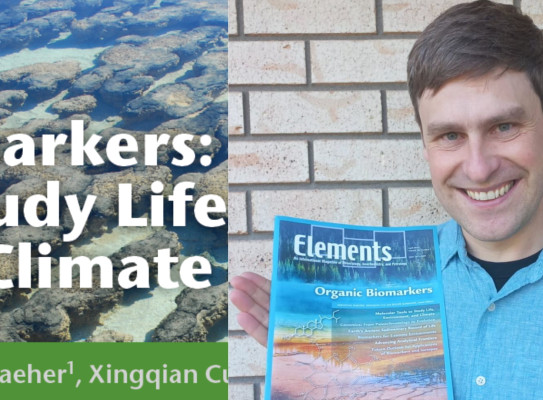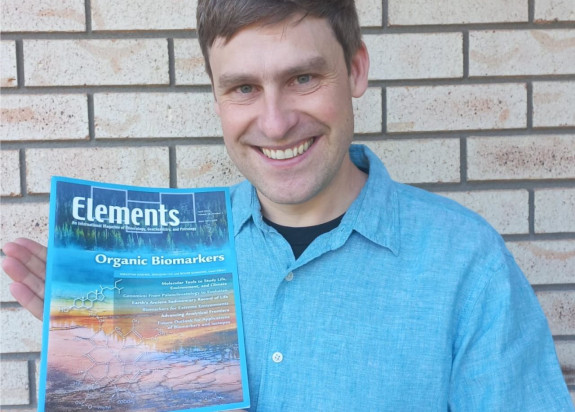Biomarkers feature breaks down the complex science

Lipid biomarkers, so called molecular fossils, have taken centre stage in the April edition of Elements Magazine with GNS Science’s Organic Geochemist Sebastian Naeher having initiated this thematic issue and working as co-guest editor to deliver.
Elements(external link) is an international magazine of mineralogy, petrology, and geochemistry. Published bimonthly, every issue explores a theme of broad and current interest.
Sebastian Naeher, who is also the Lead Scientist of the GNS/Victoria University of Wellington Organic Geochemistry Laboratory, describes the publication as a career highlight.
I very much enjoy reading Elements because they cover research fields in an easy-to-understand way, so the wider community and students learn about new research topics
"But they have never done a thematic issue about biomarkers. I was keen to organise such an issue to share my excitement and enthusiasm about our research area, and to make this more widely accessible," Naeher says. "So, I approached John Eiler from Caltech, one of Elements’ Principal Editors who liked the idea.”

The focus of the thematic issue is on biomarkers, which are molecular compounds that are typically derived from algae, bacteria and plants in the environment.
“These biomarkers can be readily detected in any environmental sample that contain traces of life. Biomarkers can be preserved over geological timescales and used to reconstruct past life forms and the environments and climates they lived in.”
In the six thematic articles they explore several applications of biomarkers, including reconstructing past environments and climates, studying early life evolution, the search for life forms in extreme and extraterrestrial environments, analytical advancements and cutting-edge applications with an outlook of what is done next in the field of biomarker research.
Naeher says biomarkers are a the major focus of the work undertaken in their Organic Geochemistry Laboratory (OGL), which is a collaboration between GNS Science and Victoria University of Wellington. “Our work contributes to the improved understanding of environmental and climate changes, human impacts. We can detect biomarkers sediments, soils, rocks, and petroleum, typically by applying mass spectrometry in combination with a separation technique such as gas or liquid chromatography.”
“Our Elements biomarker issue is not just a research publication for scientists working in our field,” says Naeher. “But an introduction for anyone not familiar with biomarkers and showcases the great potential they have in Earth and environmental science applications. Also, Elements is often used as teaching resource with a reach of around 17,000 people, so it was really important for us to write it in a way that people could understand.”
Naeher would like to give a shoutout to his co-editors Roger Summons and Xingqian Cui, principal editor John Eiler and the Elements team (Jodi Rosso, Esther Posner).
They all made this possible, and to all contributors from all corners of the globe for sharing their work applying biomarkers and stable isotopes in Earth and environmental sciences.